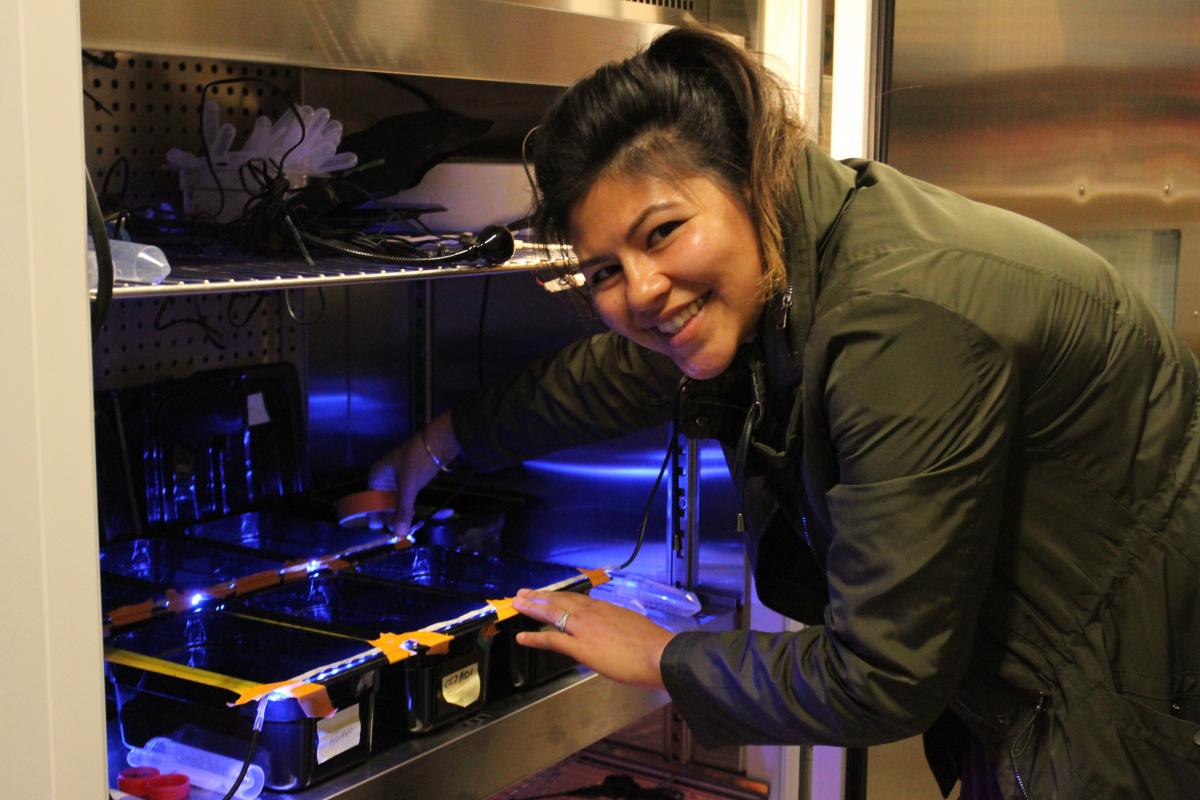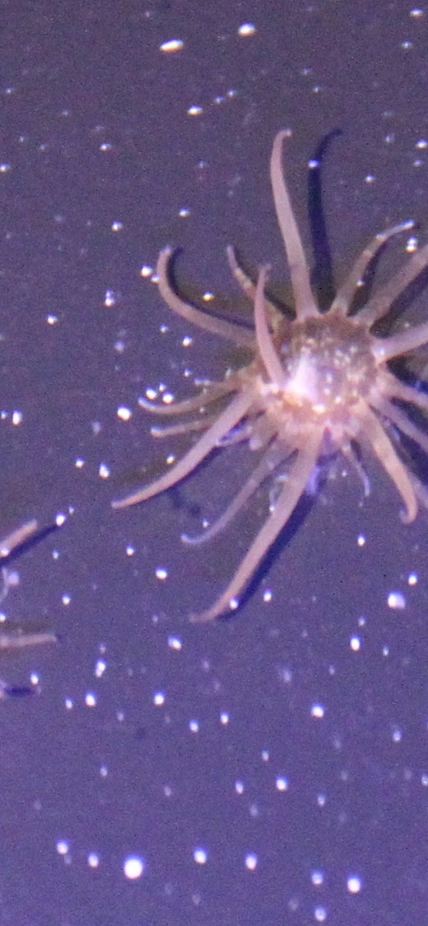Washington, DC— Bleached anemones—those lacking symbiotic algae—do not move toward light, a behaviour exhibited by healthy, symbiotic anemones. Published in Coral Reefs, this finding from Carnegie’s Shawna Foo, Arthur Grossman, and Ken Caldeira, along with Lauren Liddell of the NASA Ames Research Center, is a fascinating case study for exploring the concept of control in a symbiotic relationship.
Anemones are closely related to coral and can help scientists understand coral reef ecosystems. Like corals, they host algae that convert the Sun’s energy into food by a process called photosynthesis. The algae share some of the nutrients they produce with their anemone or coral hosts.
“Ocean warming due to climate change is causing coral and anemones to lose their algal tenants, a phenomenon called bleaching,” Caldeira said.
Anemones can capture their own food, but the nutrients provided by the photosynthetic algae allow them to survive when there isn’t much available to eat—a beneficial skill in a changing climate. Many corals will die without the nutrients provided by the algae they host, making the situation particularly dire in reef communities.
Led by Foo, this research revealed something new about bleached anemones—they do not move towards light as healthy anemones do. They found that the anemone Aiptasia sensed and moved toward white and blue light when it was hosting algae. But without an algal tenant (the symbiont), the anemone’s movement was random and lacked directionality.
This finding raises an interesting question about whether the photosynthetic algae guide the anemone host’s movement, or whether the animal has evolved to move toward the light in the presence of its algal tenant.
“It is possible that the algae are sensing the direction of the light and subsequently controlling the anemone’s movement, which optimizes their absorption of light for photosynthesis and growth,” explained lead author Foo, who is now at Arizona State University. “Or perhaps it is the anemones that sense the light, but only when populated by algae.”
 Grossman added: “The algae have numerous light-sensitive receptors absorbing light in the blue region of the visible spectrum that might participate in this process; currently we know almost nothing about the roles of such photoreceptors in these types of symbiotic algae.”
Grossman added: “The algae have numerous light-sensitive receptors absorbing light in the blue region of the visible spectrum that might participate in this process; currently we know almost nothing about the roles of such photoreceptors in these types of symbiotic algae.”
More research is needed to understand the physiological mechanisms underpinning this observed behavior—how the anemone and algae signal each other to take actions that enhance the algae’s ability to harvest energy from sunlight.
“Regardless of how the relationship between the algae’s presence and the anemone’s movement functions, it is clear that the symbiotic pairing has evolved to take advantage of a situation that allows both partners to prosper,” Caldeira concluded.
It has been suggested that transplanting more thermally resilient, non-native algae into coral could be a mechanism for surviving bleaching events. Understanding the signaling mechanisms facilitating the interactions between tenant and host—including this ability to sense and move toward light—could help scientists in this endeavor.
Top Image Caption: The sea anemone Aiptasia, photo by Ken Caldeira.
Bottom Image Caption: Shawna Foo studying Aiptasia under blue light, photo courtesy of Ken Caldeira.
